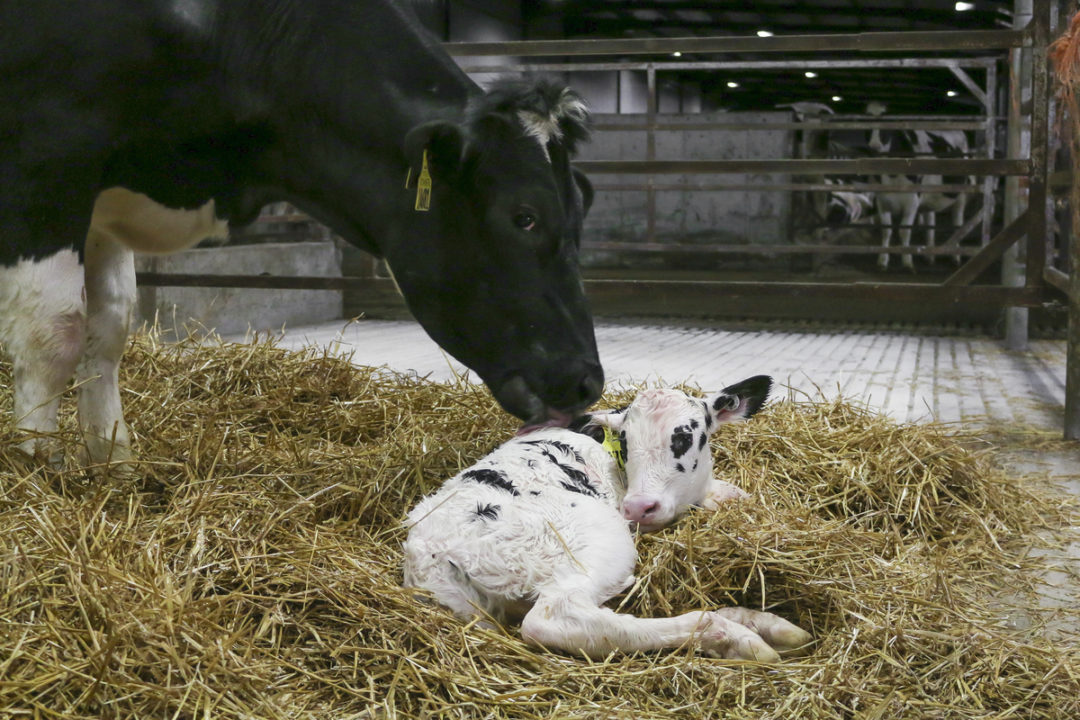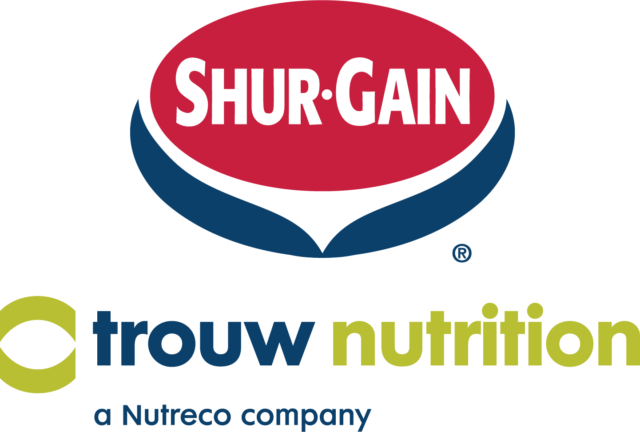The transition period is a challenging time for dairy cows. This period is commonly defined as the three weeks before calving until the three weeks after calving. During this time, cows experience three main physiological challenges:
- A drop in dry matter intake (DMI) and an increase in nutrient demands, predisposing cows to mobilize fat tissue and enter a negative energy balance
- Immunosuppression
- Systemic inflammation
These three main challenges are interconnected and could cause or magnify each other. For instance, high concentrations of ketone bodies and non-esterified fatty acids (NEFA) impair the function of immune cells, such as neutrophils. On the other hand, a high concentration of peripheral inflammatory metabolites has been associated with decreased DMI, while a high concentration of NEFA may increase the production of pro-inflammatory cytokines.
These challenges have been associated with cow health and performance losses. Cows in negative energy balance are at an increased risk of several fresh cow diseases, such as hypocalcemia and clinical metritis. Similarly, exacerbated inflammation around calving has been associated with a higher risk of developing one or more postpartum diseases in the first 60 days in milk.
Regardless of the challenging events that cows cope with during the transition period, cows can have optimal performance if proper management practices are in place. For instance, feedbunk management practices such as adequate feed delivery frequency (two times per day or more), performing frequent feed push-ups (every two hours), and feeding for feed refusal (5% or more) are some of the most beneficial practices to maximize DMI and prevent excessive fat tissue mobilization. On the other hand, excellent pen management practices, such as avoiding overcrowding pens, proper alley cleaning, good bedding management and excellent heat abatement practices, are key to decreasing systemic inflammation and stress in these susceptible groups of animals.
Although implementing best management practices such as the ones mentioned above is the best approach to address transition cow physiological challenges, sometimes putting these practices in place has a high upfront cost, and other proactive preventative management practices could be implemented while farm management is adjusted.
In the last 15 years or so, a large body of literature has focused on using anti-inflammatory strategies after calving to help cows cope with inflammation and pain associated with calving. The most common approach proposed has been treating cows with anti-inflammatory drugs known as nonsteroid anti-inflammatory drugs (NSAIDs).
One large study assessed the effects of injectable flunixin meglumine (FM) administration, a potent NSAID, after calving and reported that treated cows had a higher incidence of stillbirth, retained placenta, postpartum fever and metritis compared to placebo cows. On the other hand, a recent study that assessed the use of postpartum transdermal FM reported that treatment slightly increased milk yield and components and decreased inflammation and the risk of metritis in primiparous cows and decreased milk yield and components in multiparous cows when compared to placebo cows.
Another widely researched NSAID for modulating inflammation after calving is aspirin. The first important topic to mention about aspirin products is that they are not approved to be used in lactating cattle, even under extra-label use rules, and therefore, their use in dairy farms is controversial. Nevertheless, it is an attractive alternative due to its short milk and meat withhold, low cost and easy administration. Research studies that used aspirin products to modulate inflammation after calving have reported consistently positive results on cow health and performance. In summary, most of the studies reported benefits in cow performance in multiparous cows but not in primiparous cows.
A recent study performed by our lab assessed an applicable and simple treatment approach where cows were treated with aspirin boluses (200 milligrams per kilogram; four 480-grain boluses) at calving and 24 hours later. Our results showed that only multiparous cows treated with this strategy produced more milk (3.6 pounds per day increase) during the first 60 days in milk compared to multiparous cows that remained untreated. Furthermore, all treated cows (first-lactation cows and older) had lower concentrations of ketone bodies at 14 days in milk, lower incidence of clinical metritis and endometritis and required 20 days less to become pregnant when compared to untreated cows.
Although a blanket postpartum anti-inflammatory treatment approach (treating all animals after calving) has shown to have benefits on cow performance and health, there are several studies that have reported no effects or negative effects on certain animal categories, implying that those animals may not need the treatment. Most of the postpartum anti-inflammatory treatment approaches report no effects on primiparous cows. This group of animals has the highest systemic inflammation and stress around calving and often is the group of animals that have the greatest incidence of diseases after calving. Similarly, over-conditioned cows also experience exacerbated systemic inflammation during the transition period. Therefore, these groups of animals should be considered high-priority groups for implementing new preventative anti-inflammatory management practices.
It has been shown that systemic inflammation during the transition period does not begin at calving but several weeks before. In order to attempt to modulate inflammation in the high-priority cow groups that postpartum treatment may have no effect on, our lab developed the first prepartum targeted anti-inflammatory treatment protocols. These treatment approaches consisted of a single oral administration of aspirin (125 grams per cow; four 480-grain boluses) or one oral administration of meloxicam (1 milligram per kilogram) at 14 days (plus or minus three days) before the expected calving date. This single-dose approach is not only economical but also easy to implement in dairy farms since it occurs at a common time for moving cows into a pre-fresh group, which often is used for restraining cows and performing other practices, such as vaccination or placing activity monitors.
In this trial, we found that primiparous cows treated with meloxicam produced almost 11 pounds of milk per day more in the first 150 days in milk compared to primiparous cows treated with a placebo. Similarly, primiparous cows treated with either aspirin or meloxicam had a 20-percentage-point decrease in the incidence of stillbirth compared to primiparous placebo cows. Similarly, over-conditioned cows treated with aspirin had a lower incidence of diseases in the first 60 days in milk when compared to over-conditioned cows treated with a placebo.
When managing transition dairy cows, the main goal must be focused on providing excellent management and a comfortable environment to decrease negative energy balance and modulate systemic inflammation. Although this is achievable in most modern dairy farms, management can often fail, or, due to financial situations, management cannot be improved in the short term (e.g., building new facilities). In those scenarios, proactive and applicable strategies to modulate inflammation can help dairy producers to improve cow health and performance while management is adjusted.
Although postpartum anti-inflammatory treatment approaches have been more thoroughly researched in the last years, innovative research is now tackling inflammation at its onset during the prepartum period. The extensive body of literature in this area suggests that postpartum anti-inflammatory treatment may be more beneficial for multiparous cows, while prepartum anti-inflammatory treatment may yield greater benefits for high-priority cow groups such as primiparous and over-conditioned cows.







